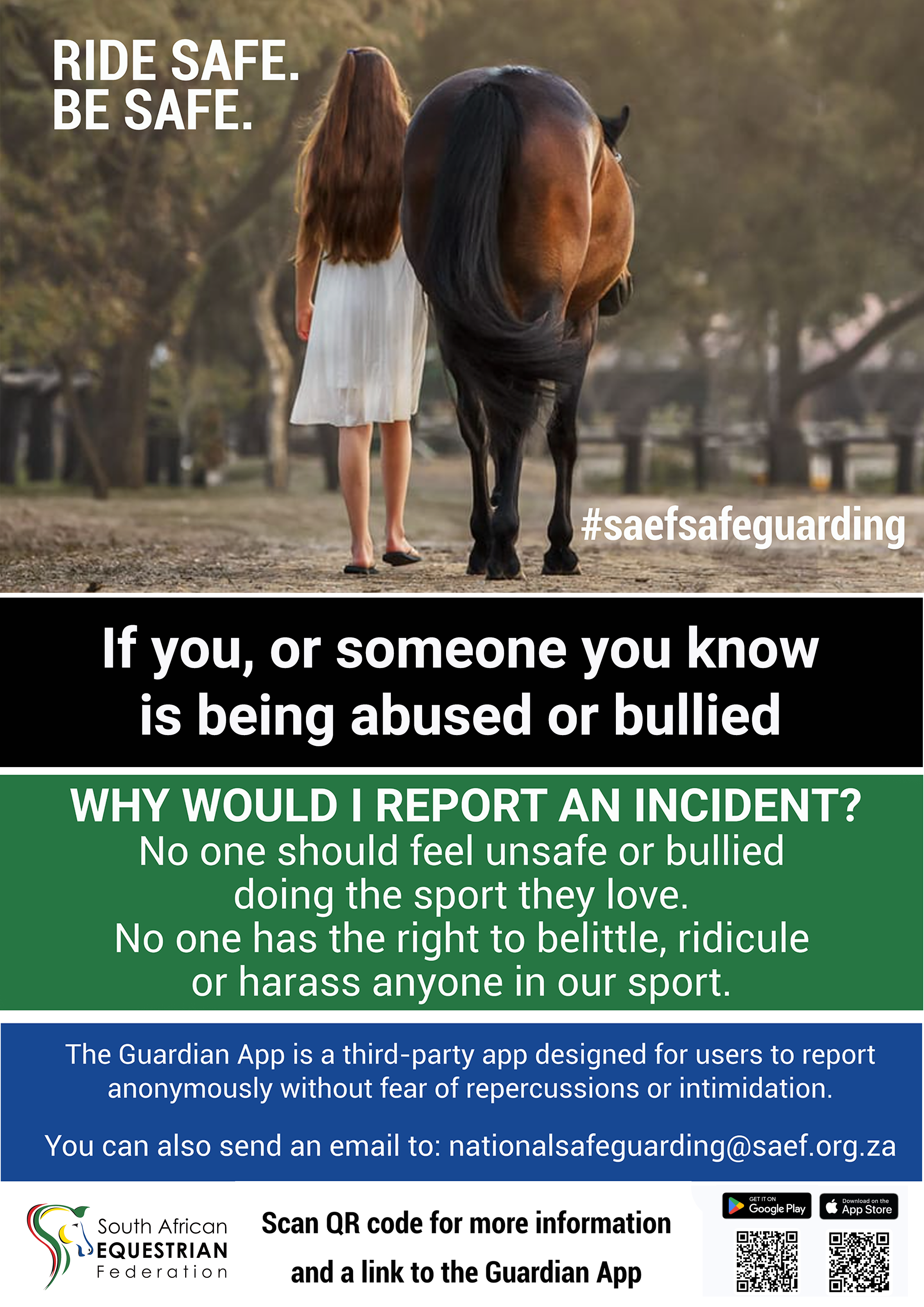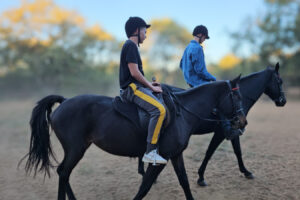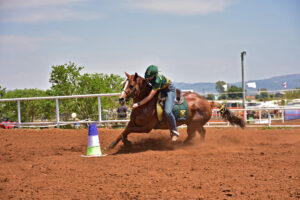Ensuring integrity in South African equestrian sport with ongoing substance testing
Testing horses for banned substances is crucial for protecting equine welfare, ensuring fair play, and upholding the integrity of equestrian competitions in South Africa.
This is part of the South African Equestrian Federation’s (SAEF’s) ongoing commitment to Clean Sport and upholding the highest standards of horse welfare and fair competition. Notably, all competitors and stakeholders are reminded that random testing by the SAEF for illegal substances in horses will continuously be conducted, and not only at SAEF events under the jurisdiction of the federation. In effect, it is the prerogative of the Federation to decide when and where to conduct said testing.
All registered athletes and participants in SAEF-recognised events are subject to the SAEF Constitution, the General Regulations, the Veterinary Regulations, and the rules of each specific discipline. These frameworks collectively safeguard the integrity, fairness, and welfare of equestrian sport. They also set out the standard procedures for equine drug testing under the Equine Anti-Doping and Controlled Medication Regulations (EADCMRs) and related provisions.
The SAEF aligns regulations with international best practices from organisations like the Fédération Équestre Internationale (FEI) and other sporting authorities to create a level playing field for all equestrians.
Under the Veterinary Regulations, horses may be selected for testing either at random or on a targeted basis. Testing can take place at any level of competition.
Why do we test?
1. Equine welfare
Testing for prohibited substances is a proactive measure that prioritises the health
and the safety of horses.
- Prevents harm from performance-enhancing drugs: Certain substances can cause serious and even life-threatening side effects in horses, and using them to gain a competitive advantage is a serious animal welfare concern.
- Avoids masking injuries: Doping agents can mask pain and lameness, forcing an injured horse to compete when it should be resting and healing. This can lead to more serious and long-term health problems.
- Ensures responsible medication: While legitimate therapeutic substances are necessary for treating illness and injury, testing ensures that these medications have cleared a horse’s system before competition. This prevents the masking of underlying issues and the potential for abuse.
2. Integrity and fair play
By creating a strict anti-doping environment, equestrian sports can maintain public
confidence and respect.
- Guarantees a level playing field: Testing ensures that a competitor’s performance is based solely on the horse’s natural ability, training, and horsemanship, not on illicit substances.
- Upholds the “spirit of sport”: Doping is fundamentally against the values of fair play and honesty. Testing upholds these principles, which are considered the intrinsic value of sport.
- Protects integrity with the public: The integrity of equestrian sports is crucial to public trust and engagement. Surveys have shown that ethical transparency is important to fans, and maintaining strict anti-doping measures helps preserve their confidence and continued support for the sport.
3. Compliance and standards
Anti-doping regulations ensure that South Africa’s equestrian sports are aligned with global standards.
- International alignment: The SAEF and other South African equestrian bodies adhere to international regulations, such as the FEI’s Equine Anti-Doping and Controlled Medication Programme. This ensures that South African competitions and athletes meet the same standards as their international counterparts.
- Strict liability: The rules operate on a strict liability principle, meaning the person responsible for the horse is liable for any prohibited substance found in its system, regardless of fault or intent. This places the burden of responsibility squarely on owners, riders, and support teams to prevent doping.
- Regular testing and updates: Regular testing of horse blood and urine samples helps detect the presence of banned substances. Laboratories continually update their methods to keep up with new or modified drugs and techniques, such as gene doping, that may be misused to manipulate performance.
Who administers tests at SAEF events?
Testing is done by only a handful (limited number) of accredited SAEF Testing Veterinarians and may occur at any level of competition. Selected horses are sampled in accordance with our SAEF Veterinary Rules and Regulations, adhering to internationally accepted veterinary and ethical standards.
This initiative is not punitive, but rather a proactive measure to ensure the health, safety, and fair treatment of all equine athletes participating in our sport.
Commitment to Clean Sport
Clean Sport is a shared responsibility. By adhering to the SAEF and FEI regulations, all riders, owners, and support teams contribute to a level playing field, the protection of equine welfare, and the long-term integrity of equestrian competition in South Africa.
Resources
Members are urged to ensure that they are familiar with the SAEF Veterinary Regulations.
https://saef.org.za/documents/veterinary-rules
The SAEF also encourages all riders, owners, and support teams to familiarise themselves with the current list of prohibited substances and to ensure full compliance with SAEF and FEI regulations.
https://inside.fei.org/fei/cleansport/ad-h/prohibited-list
You can also download the FEI App for CleanSport for Android and iPhone. Search for FEI CleanSport on your device’s App Store.
Should you have any questions or require guidance, please don’t hesitate to contact us at development@saef.org.za

















